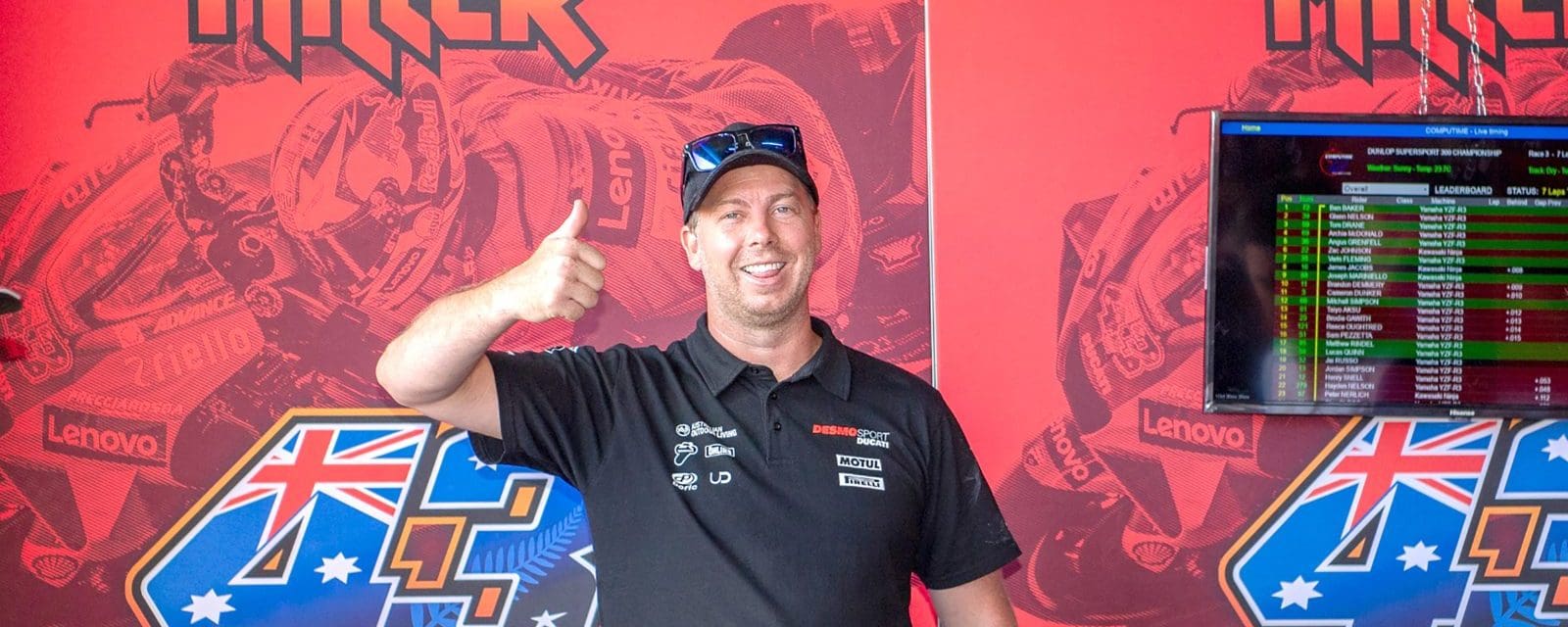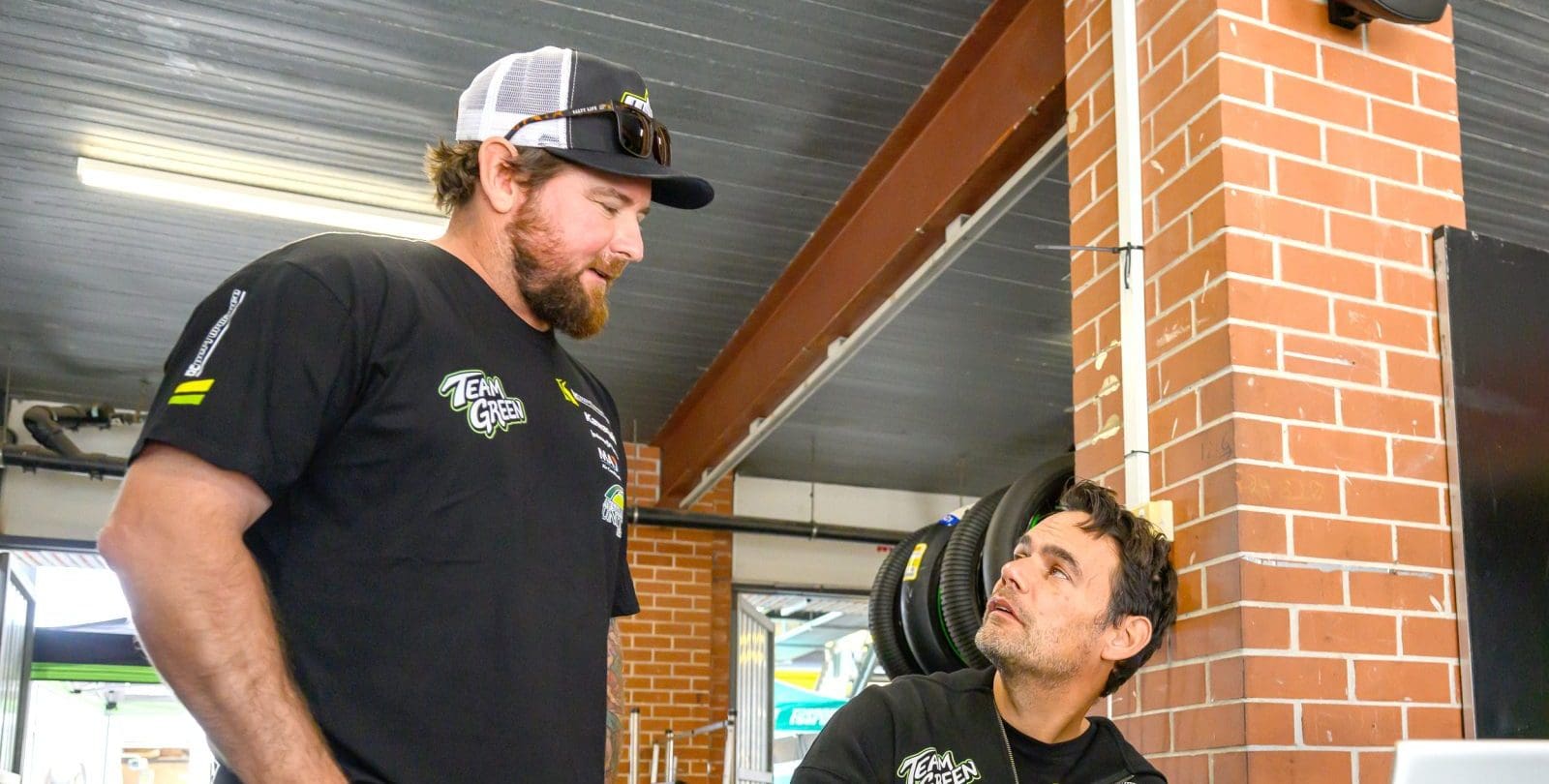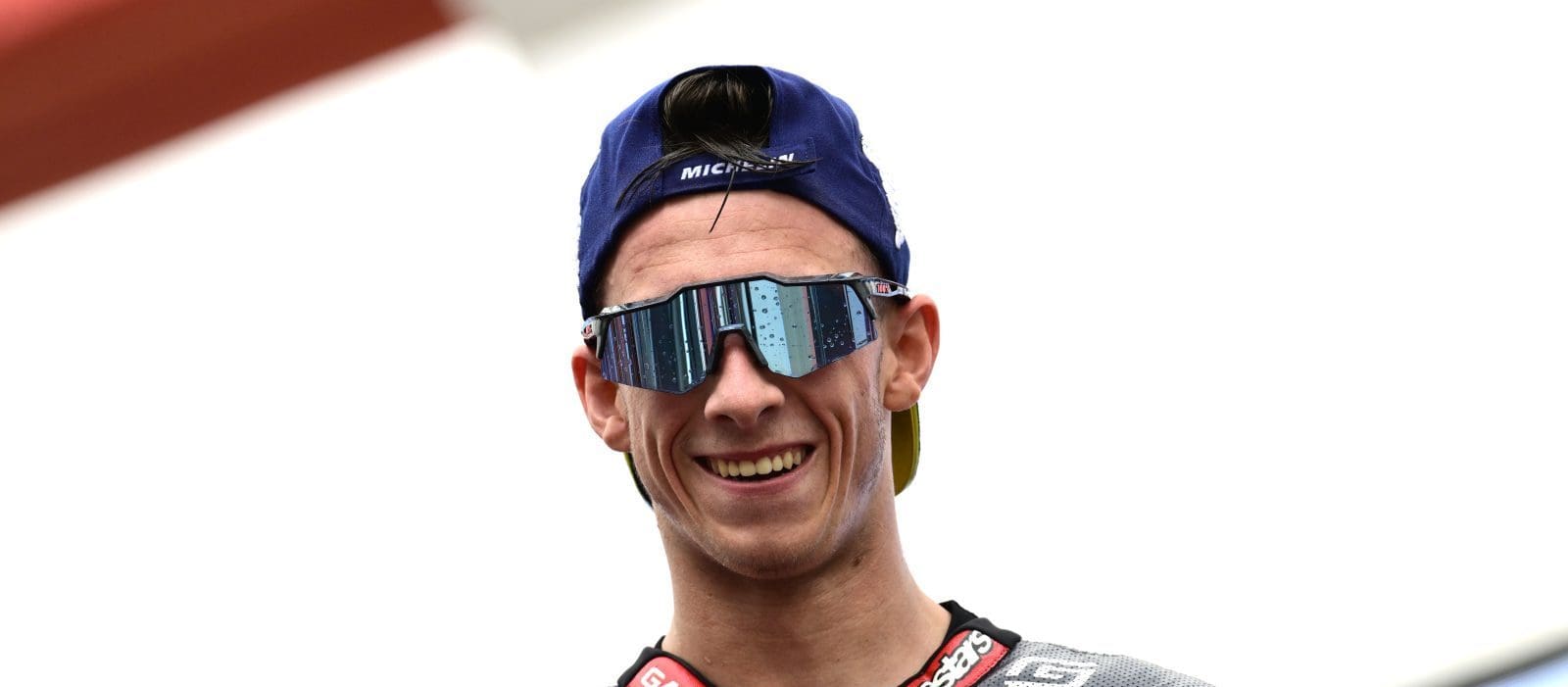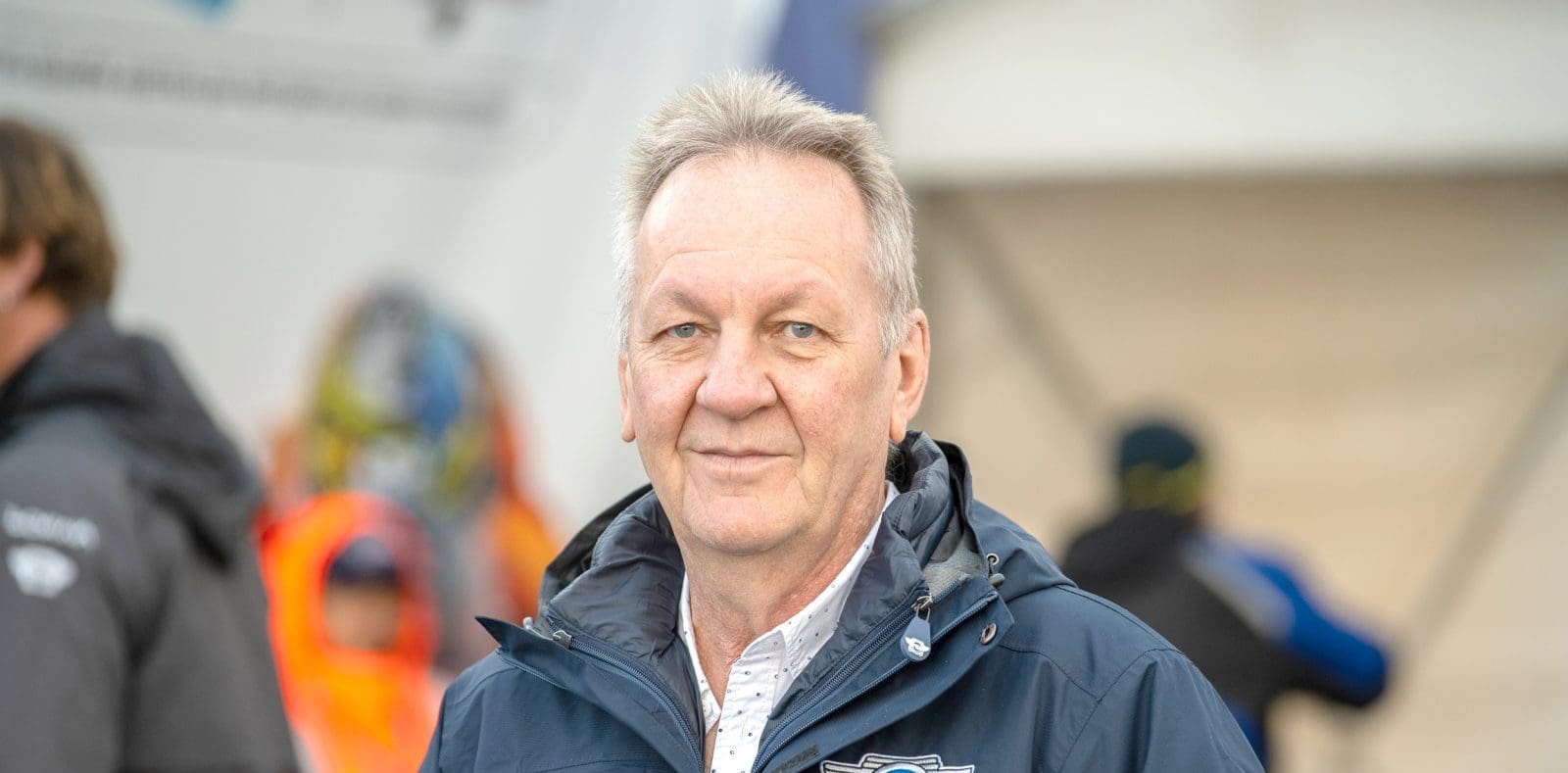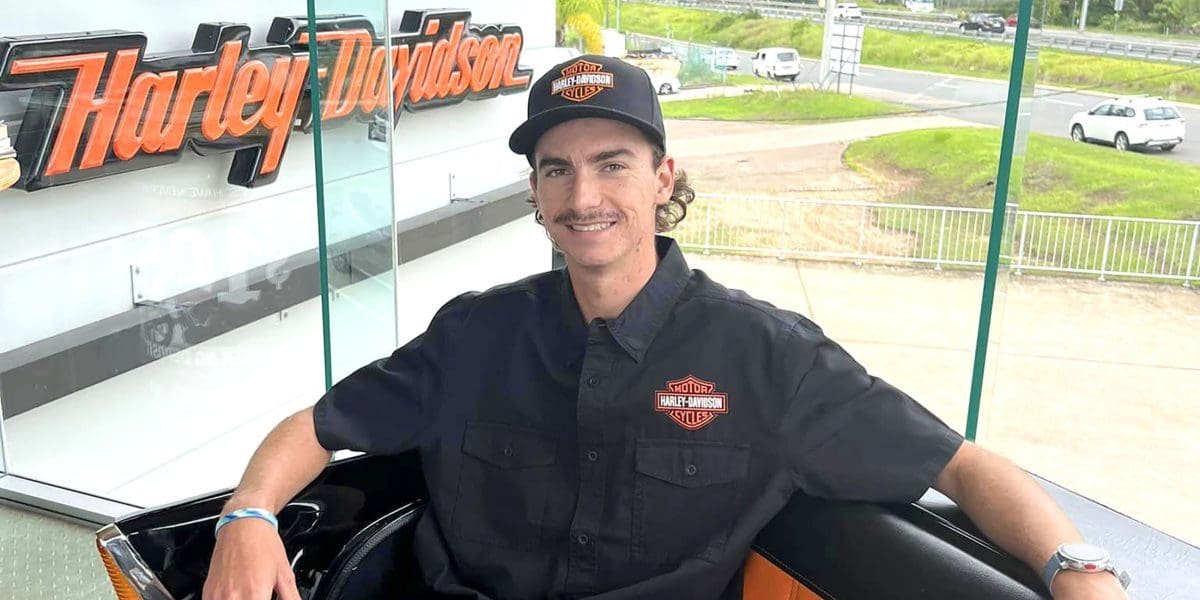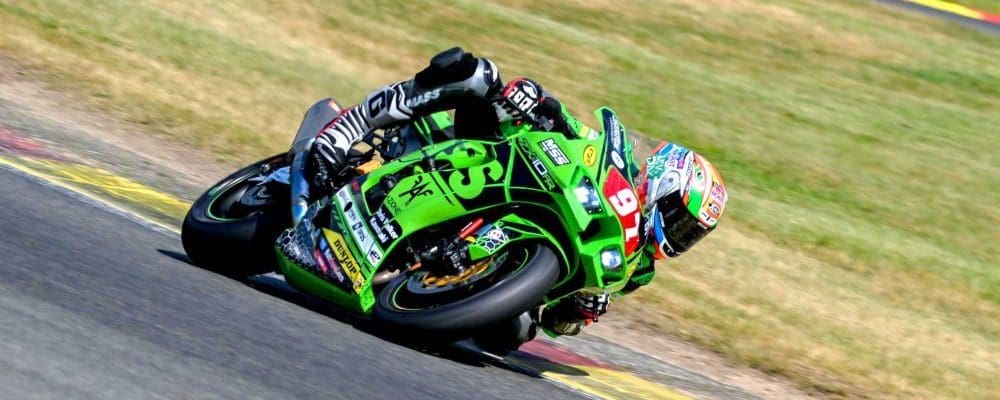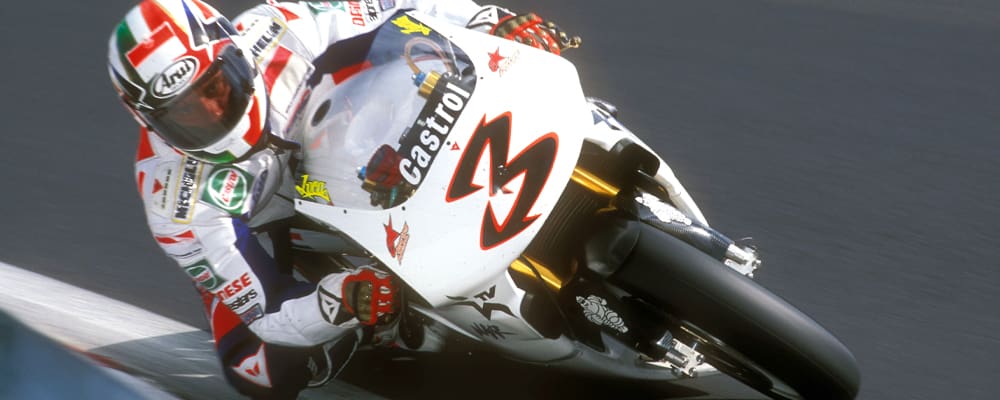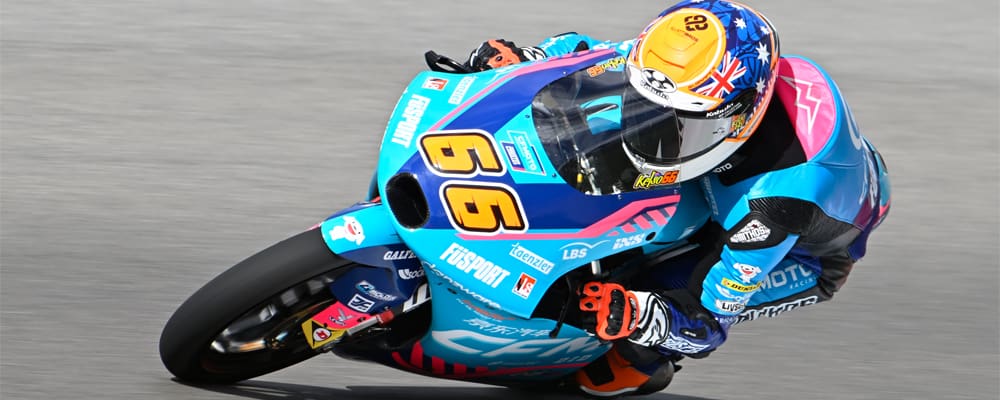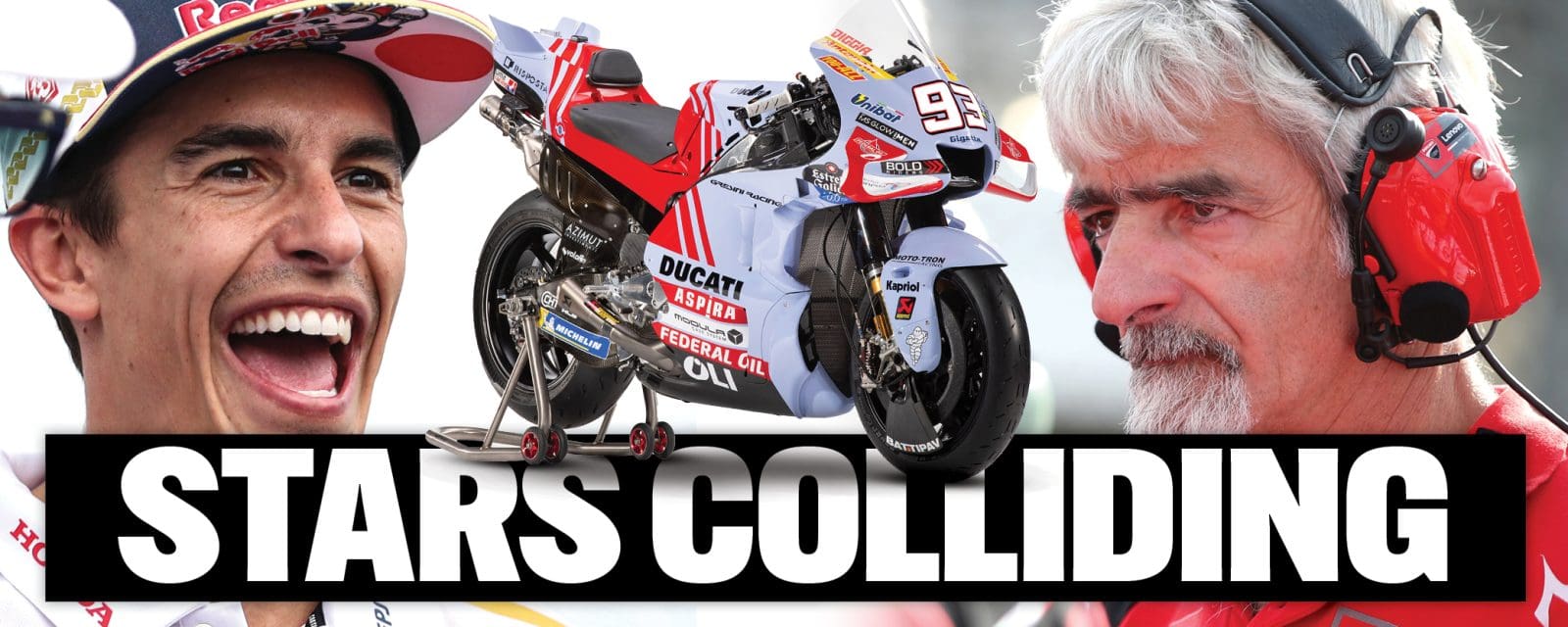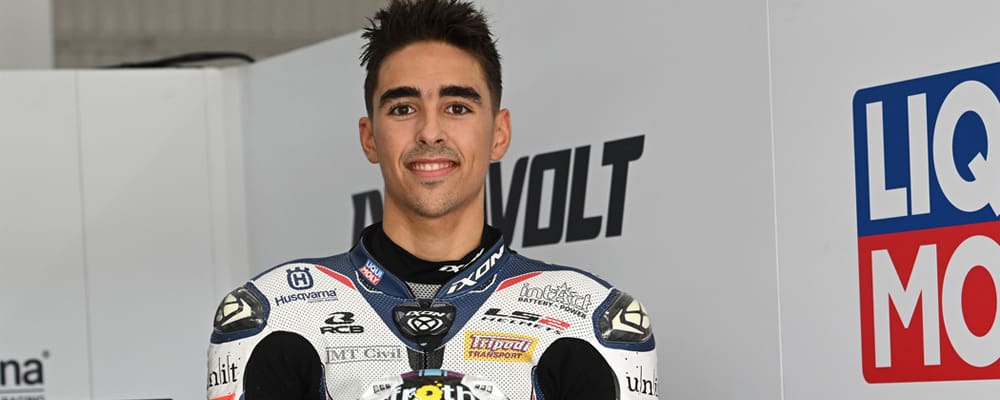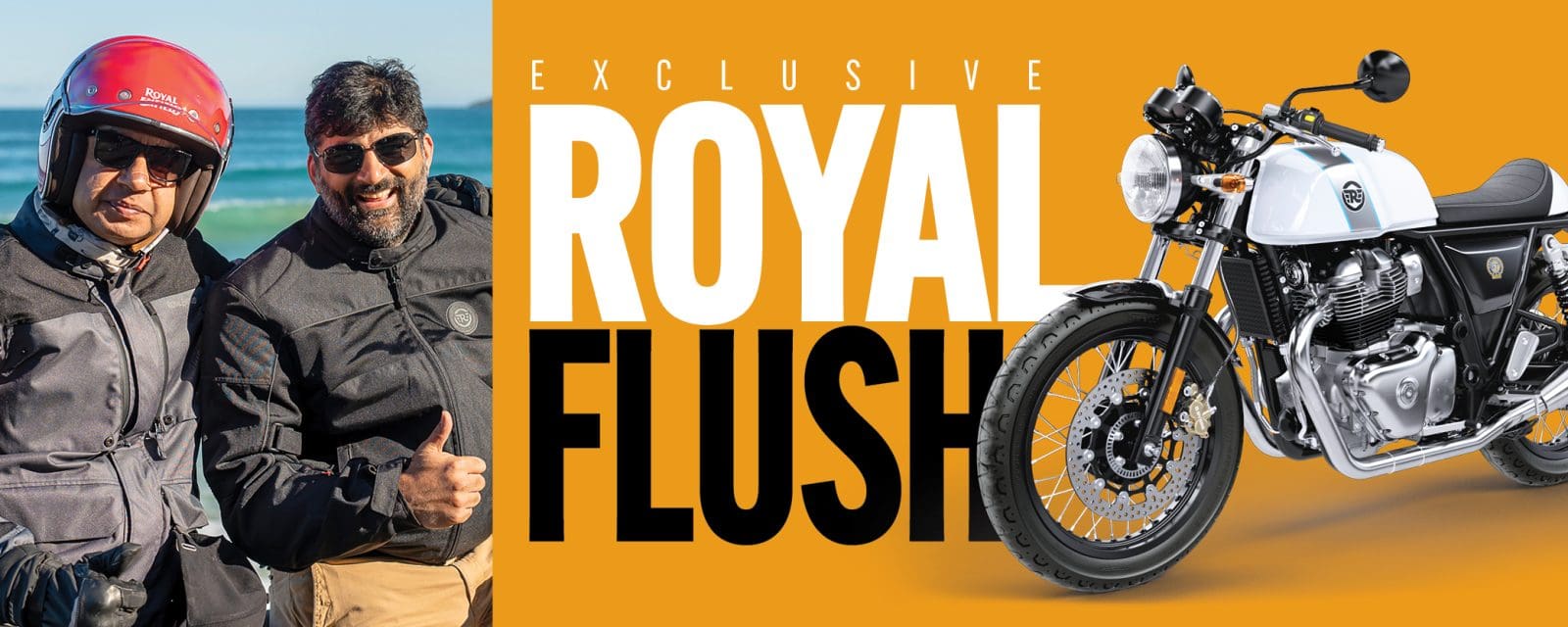Pain is temporary, quitting lasts forever.’ That six-word axiom made famous by cancer survivor Lance Armstrong is not only etched into the skin of Jason Doyle, it has become a career-defining mission statement. The Novocastrian’s story is in part a tale of Finagle’s Law (anything that can go wrong, will – and at the worst possible moment), but overwhelmingly it’s about awe-inspiring mental toughness, an unyielding will to succeed and a work ethic that’s second to none.
Jason Doyle is the Australian spirit personified.
Doyle’s path to speedway stardom is unusual in that he didn’t take up speedway seriously until his late teens. Doyle first
pursued a career in baseball. Ironically, he gave the sport away due to injury.

By medical accounts, Doyle probably shouldn’t still be racing speedway, let alone be leading the world championship for the second year in succession. The early years of his professional career were impeded by chronic shoulder injuries and a broken neck in 2012. In 2014, when he qualified for the 2015 Speedway Grand Prix series, few experts gave him much hope of success. But while some riders struggle to adapt to the high-pressure SGP arena, Doyle thrived and was heralded as an overnight success after nine years on the grind.
Fast forward to the last SGP round of 2015, the Australian Speedway Grand Prix at Melbourne’s Etihad Stadium. While
leading the final, Doyle tangled with American Greg Hancock and was then struck unavoidably by Poland’s Maciej Janowski. Coming so soon after the career-ending spinal injury suffered by Darcy Ward, the crash silenced the 26,000-strong crowd. Doyle, unconscious and bleeding from the face, was stretchered off the track by the Racesafe medics.
The injuries were severe enough to put an end to Doyle’s racing for the rest of 2015; the worst was another broken neck (C7) and a punctured lung.
But Doyle rebuilt his body during the off-season and, by the time they arrived at the penultimate round of the 2016 championship in Poland, he was five points clear on top of the table. The Aussie was in career-best form, having already won four SGPs, three of them on the trot (making him the first person to do so since Jason Crump).

The script was seemingly set. Bar an absolute disaster, Doyle was going to be crowned world champion in front of friends and family at Etihad Stadium. That was, until an absolute disaster happened. Englishman Chris Harris let go of his bike after being squeezed by Freddie Lindgren and Doyle’s fate was sealed. Trapped on the outside of Harris, he slammed into and then under the safety fence in a sickening high-speed impact.
Doyle’s season was cut short again, and his world championship was gone. The injuries were life-threatening. Doyle had shattered his right elbow and left shoulder, broken ribs, punctured his left lung, and his right lung was badly damaged.
“I could feel a gurgling motion in my lungs and I was struggling to breathe. I knew I was in serious trouble,” Doyle said in the UK.
After multiple surgeries in Poland, Spain and Australia, he defied the odds once more and came back fighting fit and ready to risk it all in the 2017 SGP season. But fate again intervened.
In June, while sitting second in the world championship standings, Doyle broke his foot when it was trapped in another rider’s front wheel. In a desperate bid to keep his 2017 title aspirations alive, he was rushed into surgery at 11.30pm. Three plates and 14 screws were inserted.
Five days later, in Doohanesque style, Doyle arrived in Horsens for the Danish SGP on crutches, unable to walk.
‘Safe’ is a relative term when talking about 500cc methanol-burning bikes that have no brakes, but before the FIM will allow you to race at the highest level with a broken foot, you first need to prove you’re safe to do so.
Doyle was cleared to race and what happened in Horsens should guarantee his place with the old breed in the annals of Australian sporting history.
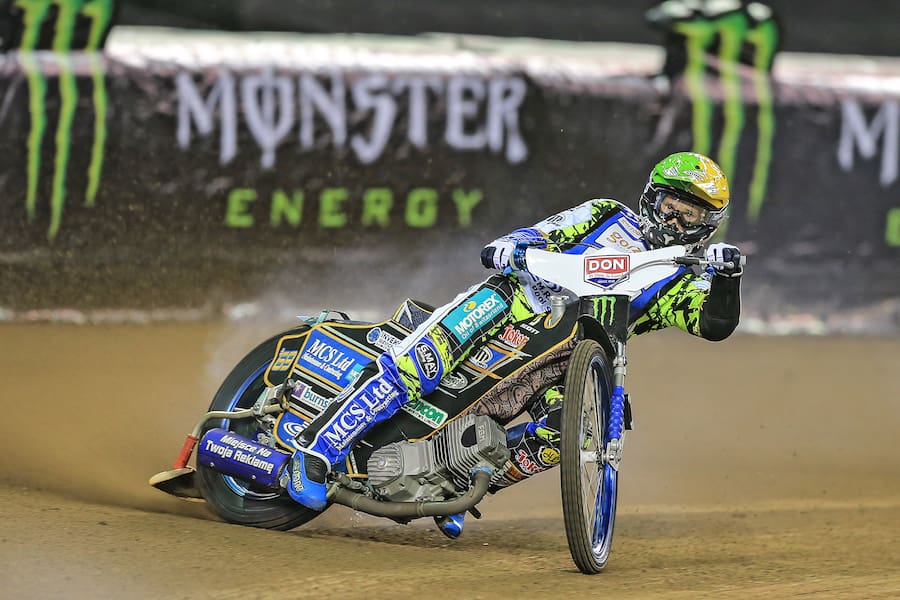
Hobbling to his bike, Doyle went out and won his first race, and another, and then he won his semi-final. Through unimaginable pain, Doyle left Denmark’s Casa Arena as the joint world championship leader and went straight back to hospital to have a cast put back on his foot.
Still on crutches, Doyle increased his championship lead over Poland’s Patryk Dudek at the British Grand Prix on 22 July, finishing second, as another Pole, Maciej Janowski emerged as a serious title contender.
After crashing and re-injuring his still broken foot in the lead-up to the Swedish Grand Prix, Doyle had a self-described ‘shocker’, scoring just five points and losing the championship lead to Janowski. “I was glad to get that bad meeting out of the way,” Doyle says.
He bounced back at Gorzow, Poland, on 26 August, finishing third and reclaiming the championship lead. As the riders headed to Teterow for round 9, just 10 points separated the top five. With only the Stockholm and Torun rounds to follow before the series decider in Melbourne on 28 October, the title looks set to go down to the wire.
In contrast to the pursuit of individual glory in the SGP series, speedway in Europe is predominately a team sport. Each team consists of seven riders, competing in matches over 15 heats, with two riders from each team in each race. The points system is the same as in the SGP – three points for a win, two for second, one for third and zero for fourth – and the team with the highest total wins. There are bonus points for away wins, draws, and away losses within a certain point range. Instead of a salary cap, teams have a points cap under which they must fit their combined rider averages. Balancing the team’s averages with high-scoring SGP riders like Doyle and up-and-comers or less-consistent scorers is a major challenge for team managers.
League racing in Europe is big business, particularly in Poland where speedway enjoys a level of popularity comparable to that of AFL or NRL in Australia. Being at the top of his game, Doyle’s services are in high demand, so much so that he is contracted to race in three different championships in three different countries. It’s not uncommon for the 31-year-old to compete in two different events on the same day.

Doyle is the team captain of the table-topping Swindon Robins in the British Premiership; in Sweden he rides for Rospiggarna Hallstavik in the Elitserien; and in the lucrative Polish Ekstraliga, Doyle calls Falubaz Zielona Góra home.
“Speedway is the second most popular sport in Poland behind soccer,” Doyle says. “I enjoy racing in Poland so much because of the fans. My home team, Zielona Góra, is a true speedway town. It’s bred into them, it’s a part of their culture. If everyone back home could see what the Aussie boys are doing in Poland I know the sport would be so much bigger.”
These extra commitments mean you can’t really compare the demands of a 12-round SGP season with that of the 18-round MotoGP or 17-round AMA Supercross championships. On top of the SGP season and competing every other day in three different leagues across Europe and the UK, Doyle also competes in the annual Monster Energy Speedway World Cup, the Speedway Best Pairs Cup and the Speedway World Games. Throw in a handful of open meetings across Europe and he can easily rack up a staggering 80-plus race meetings in a seven-month season.
Doyle bases himself in the English county of Norfolk, and the demanding schedule involves mind-boggling logistics management. A seven-day snapshot of his itinerary leading up to the British SGP at Cardiff’s Principality Stadium is tiring just to read. Still on crutches, Doyle raced in Sweden on Tuesday, returned to the UK to race in Poole on Wednesday, then raced at home for Swindon on Thursday, had practice for the SGP at Cardiff in Wales on Friday, raced there on Saturday night (increasing his championship lead), raced in Poland on Monday and then returned to Sweden for a race on Tuesday.

“The team van clocked up more than 10,000km in one week of racing,” he says. “It’s not the racing so much that takes it out of you, it’s the distances we travel that plays a massive part in the fatigue at the end of the season.”
As they say, ‘Happy wife, happy life’, and Doyle and his partner Emily, who he married earlier this year, have found a way to make the challenges of life on the road work for them.
“Emily wasn’t from a motorcycling background, so she learned the hard way about speedway with all of my injuries,” he says. “It is tough; during the busiest parts of the season when I’m away a lot, I only get to see Emily on Wednesdays. But then I do get to annoy her all off-season. I’m very lucky, though; she’s great and she understands that we only have a very small window that we can make money in speedway.”
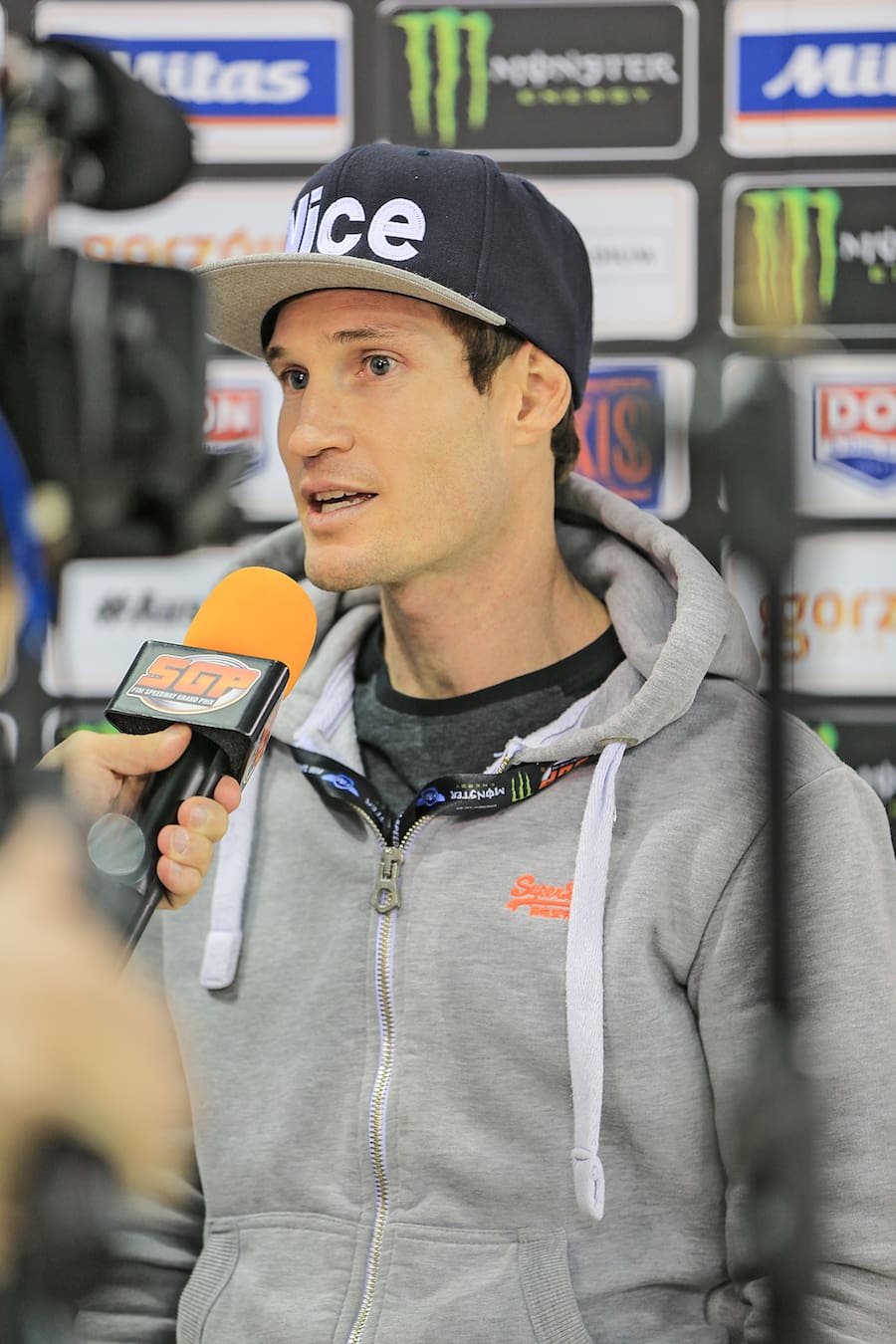
Doyle points out that his experience isn’t unique, though. A tight-knit group of around 20 young Australians are chasing their dreams around Europe, and they share flights and car-pool as much as possible. “It’s the same for all of us Aussie boys over here, we’re all away from friends and family.”
Fitness and nutrition is another challenge with life abroad. “It used to be really bad; we would sometimes go days without eating a main meal, just grabbing whatever fast food we could, when we could,” Doyle says. “But it’s a lot better now – there are a lot of healthy options available.”
While speedway continues to grow in terms of professionalism, it’s still a far cry from the likes of MotoGP, WSBK or AMA Supercross.

Most notably, there are no factory speedway teams. Each rider is his own brand, his own team owner. To compete so often while traversing Europe and the UK requires a significant amount of financial and human capital, for which the riders themselves are responsible.
“I’ll start the season with seven bikes and 10 or 12 engines, but that can change pretty quickly depending on how much I crash,” Doyle says.
The workhorse of Team Doyle #69 is his home on wheels, a Mercedes-Benz Sprinter tricked out by team sponsor AB Race Cruisers. Inside, it’s a real-life game of Tetris. The 316 CDI long-wheelbase Sprinter uncomfortably sleeps three, holds four complete bikes, two spare engines, four sets of tyres, five wheels, and every other imaginable spare needed to run a mobile race team.
Speedway is motor racing in its purest, simplest and one of its oldest forms. While much has changed since the early days of its inception in the early part of the 20th century, a lot has stayed the same. It still involves a single-cylinder engine, no brakes, no gears, no programmable electronics, all strapped into what resembles a mountain bike frame that only turns left. But for all its simplicity, it’s an incredibly challenging form of motorcycling, requiring precision in bike set-up. Slight variances in atmospheric or track conditions can wreak havoc on settings that worked half an hour earlier.
“It takes years to learn how to set up bikes properly,” Doyle says. “Each track is different and I have different engines suited to different types of tracks. Then there are the tracks inside stadiums – they’re different again.”

It’s a constant balancing act. The back wheel has about 80mm of adjustment and is crucial to bike set-up. Shortening the wheelbase provides more grip and drive, but makes the bike harder to control. Increasing the bike length makes it easier to manage on grippier tracks, but provides less drive. Without gears, the rear sprocket is used to control speed and acceleration – fewer teeth on the rear sprocket for increased top-end speed on larger tracks, or more teeth for increased acceleration and less top-end speed on shorter tracks.
A complete speedway bike represents more countries than the United Nations. Doyle uses an Italian engine, tuned in Denmark, bolted into a frame produced in the Czech Republic, and he stretches cables with a US-made throttle. But there is a distinctly Australian feel to Doyle’s bike. Peak power of 56kW is transferred onto the shale through sprockets and wheels designed and manufactured in Brisbane by John Titman Racing (see breakout).
With relative anonymity in Australia, our legion of speedway stars are stoked to be competing at Etihad Stadium, one of the world’s biggest venues with a retractable roof. “Getting to race a grand prix in Australia is like Christmas Day for me. It’s the only opportunity we get to show everyone at home what we can do, so it’s a massive moment for us. To win in Melbourne would be like a fairytale.”
After watching the world title cruelly slip away from his hospital bed in 2016, Doyle remains cautiously philosophical about his chances of keeping his lead and claiming gold in Melbourne. “We’re just taking it as it comes. If it doesn’t happen this season there’s always next year.”
Should all the cards fall his way in Melbourne, don’t expect to see another ‘shooey’ from Doyley. “I probably wouldn’t do another one. It’s not like MotoGP – I’ve done 80 meetings in my boots, the inside of them are disgusting. I might have to try something different and maybe do a streak!”

Words STEPHEN HOPE
PHOTOGRAPHY Stephen Hope, Mateusz Wójcik, Haggis Hartman, AB Race Cruisers
